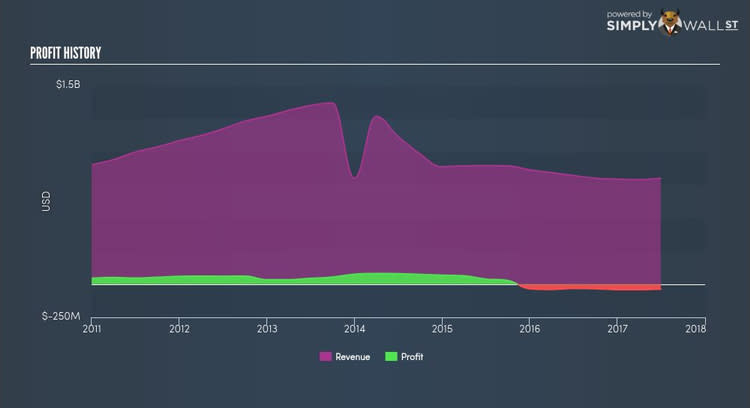What You Must Know About TriMas Corporation’s (TRS) Risks

If you are looking to invest in TriMas Corporation’s (NASDAQ:TRS), or currently own the stock, then you need to understand its beta in order to understand how it can affect the risk of your portfolio. The beta measures TRS’s exposure to the wider market risk, which reflects changes in economic and political factors. Different characteristics of a stock expose it to various levels of market risk, and the market as a whole represents a beta value of one. A stock with a beta greater than one is expected to exhibit higher volatility resulting from market-wide shocks compared to one with a beta below one.
Check out our latest analysis for TriMas
An interpretation of TRS's beta
TriMas has a beta of 2, which means that the percentage change in its stock value will be higher than the entire market in times of booms and busts. A high level of beta means investors face higher risk associated with potential gains and losses driven by market movements. Based on this beta value, TRS can help magnify your portfolio return, especially if it is predominantly made up of low-beta stocks. If the market is going up, a higher exposure to the upside from a high-beta stock can push up your portfolio return.
Does TRS's size and industry impact the expected beta?
With a market cap of USD $1.26B, TRS falls within the small-cap spectrum of stocks, which are found to experience higher relative risk compared to larger companies. Furthermore, the company operates in the machinery industry, which has been found to have high sensitivity to market-wide shocks. So, investors should expect a larger beta for smaller companies operating in a cyclical industry in contrast with lower beta for larger firms in a more defensive industry. This supports our interpretation of TRS’s beta value discussed above. Next, we will examine the fundamental factors which can cause cyclicality in the stock.
Can TRS's asset-composition point to a higher beta?
During times of economic downturn, low demand may cause companies to readjust production of their goods and services. It is more difficult for companies to lower their cost, if the majority of these costs are generated by fixed assets. Therefore, this is a type of risk which is associated with higher beta. I test TRS’s ratio of fixed assets to total assets in order to determine how high the risk is associated with this type of constraint. With a fixed-assets-to-total-assets ratio of greater than 30%, TRS appears to be a company that invests a large amount of capital in assets that are hard to scale down on short-notice. Thus, we can expect TRS to be more volatile in the face of market movements, relative to its peers of similar size but with a lower proportion of fixed assets on their books. This is consistent with is current beta value which also indicates high volatility.
What this means for you:
Are you a shareholder? You may reap the gains of TRS's returns in times of an economic boom. Though the business does have higher fixed cost than what is considered safe, during times of growth, consumer demand may be high enough to not warrant immediate concerns. However, during a downturn, a more defensive stock can cushion the impact of this risk.
Are you a potential investor? I recommend that you look into TRS's fundamental factors such as its current valuation and financial health as well. Take into account your portfolio sensitivity to the market before you invest in the stock, as well as where we are in the current economic cycle. TRS may be a great investment during times of economic growth.
Beta is one aspect of your portfolio construction to consider when holding or entering into a stock. But it is certainly not the only factor. Take a look at our most recent infographic report on TriMas for a more in-depth analysis of the stock to help you make a well-informed investment decision. But if you are not interested in TriMas anymore, you can use our free platform to see my list of over 50 other stocks with a high growth potential.
To help readers see pass the short term volatility of the financial market, we aim to bring you a long-term focused research analysis purely driven by fundamental data. Note that our analysis does not factor in the latest price sensitive company announcements.
The author is an independent contributor and at the time of publication had no position in the stocks mentioned.

